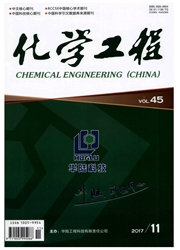

 中文摘要:
中文摘要:
采用序批式间歇活性污泥反应器(SBR)研究了进水有机物和氨氮负荷对交替好氧/缺氧短程硝化反硝化生物脱氮工艺的影响。研究结果认为:进水中不同COD和氨氮质量浓度均没有对交替好氧/缺氧短程硝化反硝化生物脱氮工艺中的实时控制参数和处理效果产生影响,系统运行稳定,仅是由于进水COD和氨氮质量浓度的大幅度变化将会导致各自的好氧曝气所需时间有所差异;进水氨氮质量浓度越高,所需硝化时间越长。但经过实时控制以后,无论进水氨氮质量浓度如何变化,硝化和反硝化作用都是很完全的;反应器最终出水中基本检测不到氨氮和亚硝酸盐氮质量浓度。因此,可以得出交替好氧/缺氧短程硝化反硝化生物脱氮工艺抗冲击负荷能力强,当采用实时控制策略控制脱氮过程时,系统运行稳定。
 英文摘要:
英文摘要:
The effects of influent COD and ammonia nitrogen mass concentration on alternating oxic-anoxic shortcut nitrification-denitrification were studied specially in some experiments carried on a sequencing batch reactor (SBR). The following results show that: Real-time control parameters and removal efficiency were not influenced by different influent COD and ammonia nitrogen mass concentration in biological nitrogen removal process via alternating oxic-anoxic shortcut nitrification-denitrification, and the operation of whole system was stable. However, aeration time was changeable with various COD and ammonia nitrogen mass concentration in influent. More time duration for the nitrification was needed, if ammonia nitrogen mass concentration in influent was much high. Nitrification and denitrification were whole finished because of using real-time control strategies, and ammonia and nitrite were not detected in effluent of SBR. Therefore, it shows that there is strong ability resisting the change of influent COD and ammonia in alternating oxic-anoxic shortcut nitrification-denitrification process, and the system is stable when using real-time control strategies controls the process for nitrogen removal.
 同期刊论文项目
同期刊论文项目
 同项目期刊论文
同项目期刊论文
 期刊信息
期刊信息
